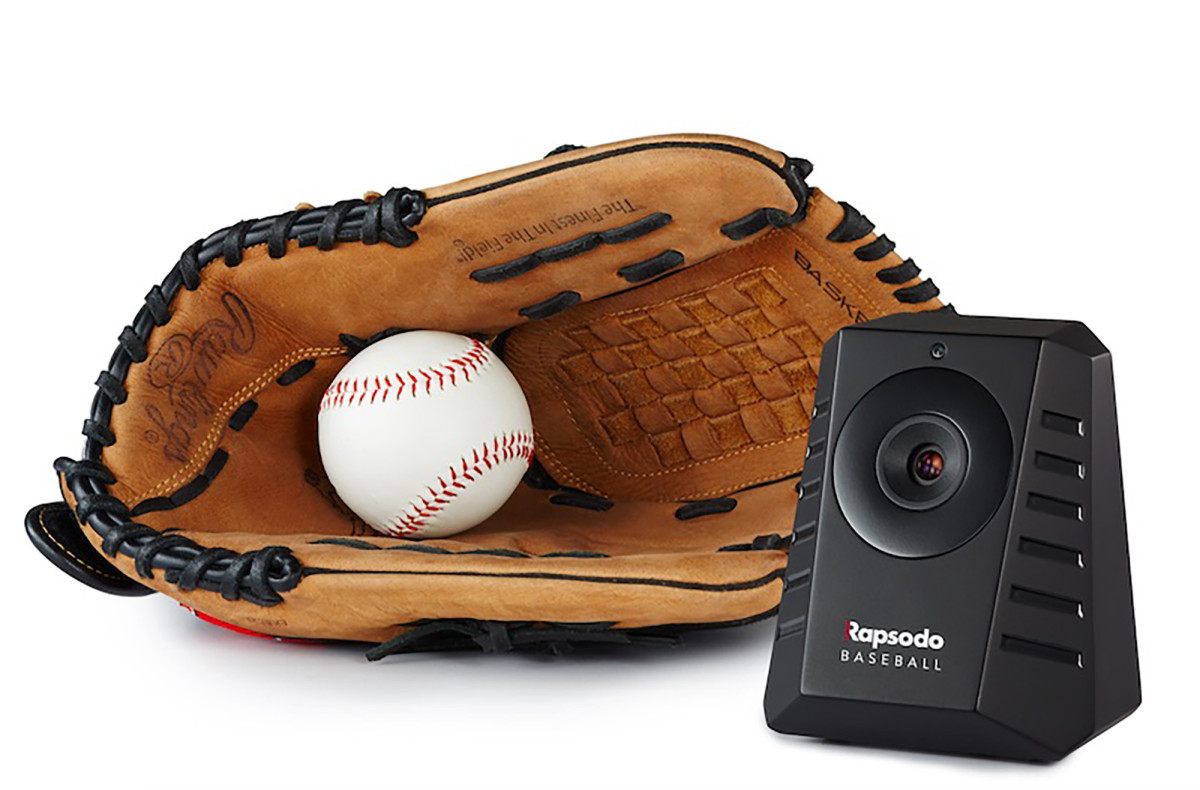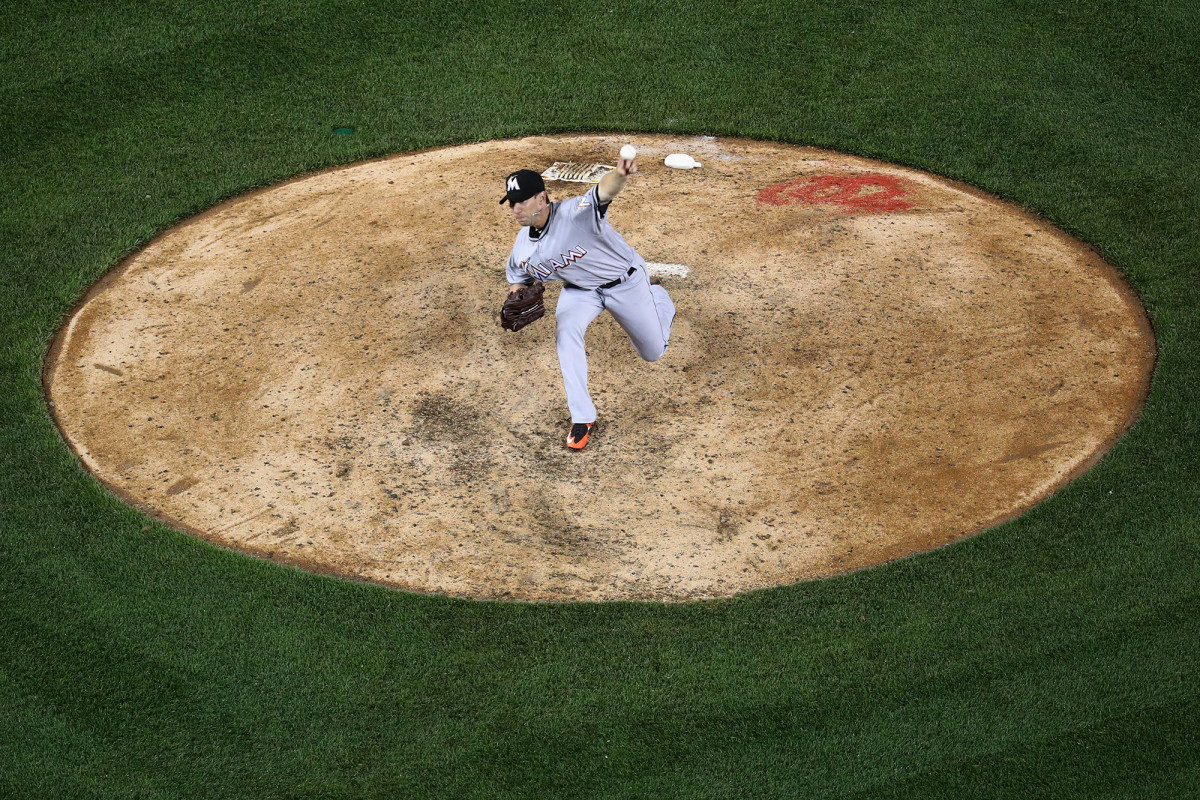How one MLB player is using Rapsodo pitch analysis technology to revive his career

This offseason, Craig Breslow is searching for an edge. The 36-year-old left-handed pitcher won the World Series with the Red Sox in 2013, but was put on the disabled list after straining his throwing shoulder the following March and never seemed to fully recover. His ERA jumped from 1.81 in 2013 to 5.96 the following year. Last season he was signed as a free agent and then released by both the Marlins and the Rangers. “I hadn’t been a successful pitcher for three years,” he says.
To attempt to resurrect his decade-long career in the major league, Breslow is turning to a pitch-tracking camera made by Rapsodo. The Yale-educated molecular biophysics and biochemistry major is hoping he can reverse engineer the best pitches in baseball by looking back at other players’ PITCHf/x and TrackMan data. Then by getting real-time feedback on each throw’s velocity, spin, and trajectory through Rapsodo, he plans to tune up his own throws.
“We all just watched [Cleveland left handed relief pitcher] Andrew Miller dominate the post season with his devastating slider,” Breslow says. “There are a number of factors that go into his ability to make the ball do what it does. He’s 6’8”, he’s got incredibly long levers. He’s got a great ability to spin a ball. At 5’11” and probably a wingspan two feet shorter, I may never be able to impart the same spin rate on a baseball as he can, but I should be able to spin it in the same direction, which will give me the same shape of the breaking ball.”

The Rapsodo system uses a camera mounted on a six-foot-high tripod positioned six feet behind the back of the plate. Radar built into the device initially picks up the movement of a ball pitched towards it from the mound and triggers the camera to start taking a rapid series of photos. By combining the radar and image information, Rapsodo can quickly work out the speed and trajectory of the pitch, and the spin of the ball.
“We’re able to trace the seams of the ball to understand exactly how it’s rotating,” says Seth Daniels, director of sales and marketing at Rapsodo. “From the images itself, we can actually tell you the exact spin axis of the pitch as it’s coming into the plate.”
MLB fans are probably more familiar with the PITCHf/x and TrackMan systems used in pro ballparks. PITCHf/x has been photographing pitches since the 2006 postseason, and analyzing those images to determine trajectories and estimate spin. TrackMan Baseball was launched in 2011, and uses radar to accurately extract all of the parameters of a pitch. Rapsodo Baseball will probably not replace those two, but offers a cheaper—$3,000 compared to around $30,000 for TrackMan—more portable system that could fill its own niche.
All in your ears: Under Armour's new wireless headphones track heart rate too
Daniels predicts that it could be used by MLB pitchers warming up in the bullpen, or carried around by scouts scouring the country for talent. If high schools invest in the system, MLB and college teams could soon have a wealth of longitudinal information on every prospective pitcher. “You can see the growth of the player,” Daniels says. “Maybe as they started high school as a freshman all the way to a senior.”
Early Rapsodo adopters include academies such as Driveline Baseball in Kent, Wash., and the Texas Baseball Ranch in Montgomery, Tx., and colleges such as Nebraska and Xavier. The device is now available for preorder through Rapsodo’s website.
Breslow sought out advice from pitching coaches, GMs and former teammates as he tried to diagnose how to fix his pitching. His ERA against left handers last season was 4.76, more than double what it had been four years ago. “As a left-handed reliever I needed to be able to dominate left-handed hitters,” he says. To make a comeback he feels he needs a curve that breaks more, and a sinker that really sinks.

Changing the movement of those pitches comes down to adjusting the spin, since spin rate and direction affect the aerodynamic forces acting on a ball. Breslow doubts that he’ll be able to increase the overall spin rate, believing that he’s already somewhere close to his own maximum. But he might be able to shift the axis around which a ball is spinning by playing around with his arm angle, finger pressure and wrist positioning.
“Taking some baseline data I could tell what my breaking ball looks like today, what my sinker looks like today,” Breslow says. “And then as I adjust my own arm angle and start to manipulate the spin axis, I can look at what that does to my breaking ball. Does it increase the spin efficiency, does it decrease it, does it end up making a bigger breaking ball, a smaller breaking ball, one that moves later or earlier.”
Rapsodo’s spin efficiency metric evaluates what percentage of a ball’s total spin will contribute to break. Topspin and backspin move the trajectory of a ball downwards and upwards, respectively, and sidespin makes a pitch curve horizontally. However bullet spin, where the ball rotates around an axis parallel to the direction the ball is moving, creates zero break. So by decreasing bullet spin, Breslow can maximize the movement he is able to get on a ball.
Training after 50: Dan O'Brien dispels the myths about exercise for older adults
Breslow isn’t yet sure whether the experiment to modify his pitching will work, since he is still early into his offseason training schedule, and has only been using Rapsodo’s system for a couple of weeks. “The best I can come out of this offseason is with a sinker that moves 50% more, a breaking ball that’s 50% bigger in terms of horizontal and vertical displacement,” he says.
If Breslow can find his way back into a bullpen, the truest test will come next season.
“I can know quantifiably or statistically that I’ve made improvements based on the way that I define improvements,” he says. “I can improve my breaking ball using the metrics that Rapsodo is capable of measuring, but until I throw it to a hitter in a game, I won’t totally know.”
